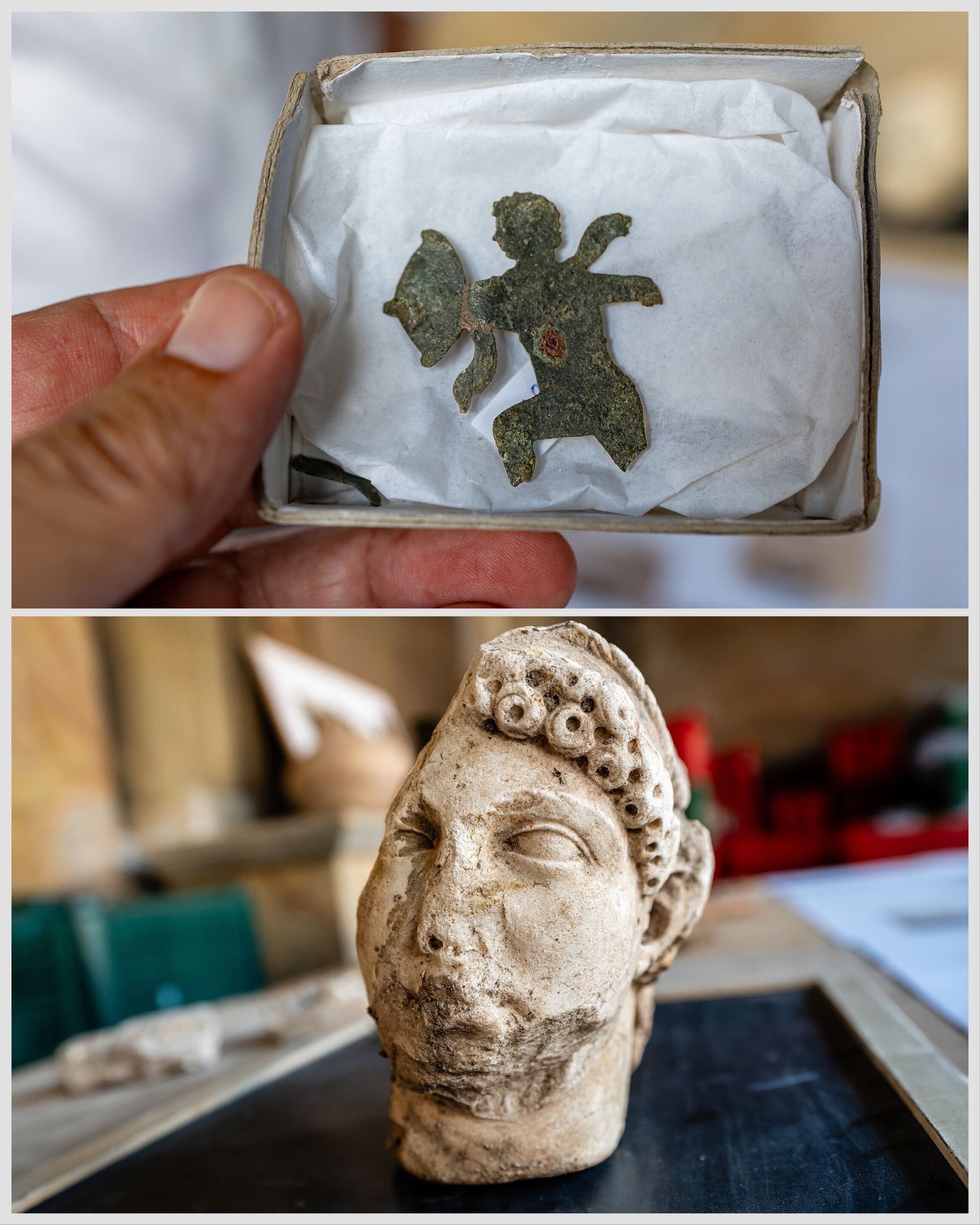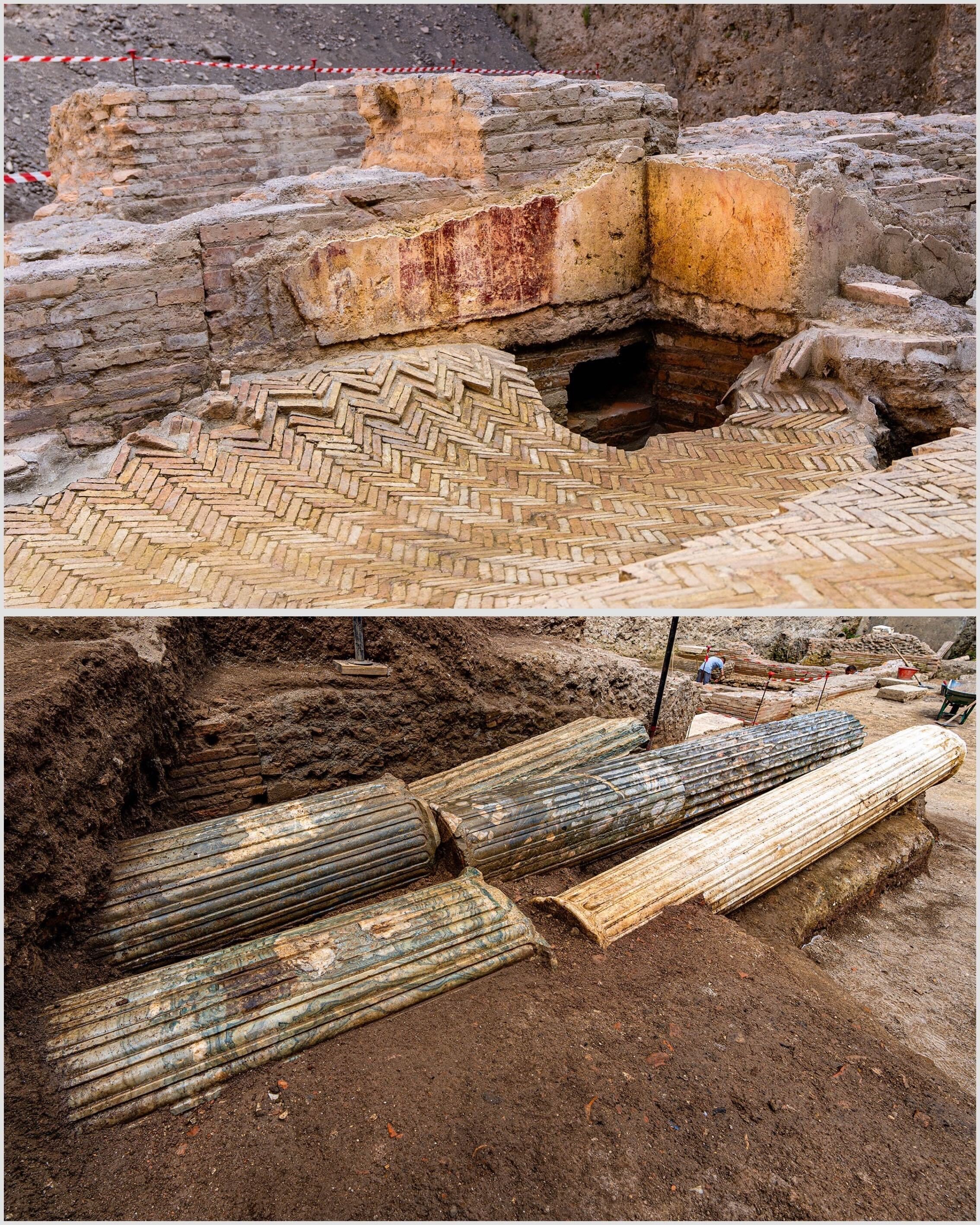Ahead of construction of a luxury hotel, archaeologists working at a site near the Vatican unearthed the ruins of a private theater where the notoriously cruel Roman emperor Nero once prepared for his public appearances.
The whereabouts of the first-century-C.E. theater, which is described in Roman writings, were unknown until now. The researchers who made the discovery think Nero—who, along with being infamous for persecuting Christians, fancied himself a great performer—sang, acted and performed poetry on the theater’s stage many times.
“Although we have no evidence that this could have happened, [Roman writers] Pliny the Elder and Tacitus recall how Nero performed in a theater that we propose to identify with one of these buildings,” says Marzia Di Mento, lead archaeologist at the site.
Ornate Theater
The project was overseen by the Special Superintendency for archaeology in Rome, part of Italy’s Ministry of Culture. The excavations are now the size of a city block, and work on the theater site began about two years ago. There archaeologists unearthed two large brick structures beside a courtyard that may have been surrounded by a portico.
One of the structures was a semicircular cavea where an audience would have sat in tiers, facing the decorated background (called the scaenae frons) of a Roman theater stage to the west. What’s left indicates the background was covered with marble and gold leaf. The second building was perpendicular to the first and had rooms that seem to have been service areas for stage equipment, such as sets and costumes.

Renato Sebastiani, one of the leaders of the project, the obvious wealth of the ruins confirms they are from Nero’s theater. “The richness of the materials used, the marbles, the stuccos decorated with gold leaf … testifies that we are dealing with works created for the imperial family,” he says. The theater and other finds at the site date from the time of the early Roman Empire in the first century—Nero reigned in the mid-first century—until Rome’s medieval period in the 15th century.
Nero’s Gardens
The site is just a few hundred feet from the Vatican on the west bank of the river Tiber, in an area once covered by the Gardens of Nero. The area originally belonged to Agrippina the Elder, a granddaughter of Augustus and the mother of Julia Agrippina.
Known as Agrippina the Younger, Julia Agrippina was also Nero’s mother by an obscure Roman statesman. She was the sister of the emperor Caligula and the niece of his successor Claudius, who became emperor after Caligula was murdered by his own Praetorian Guard in C.E. 41.
In C.E. 49 Agrippina became Claudius’s fourth wife, although the marriage between an uncle and a niece was considered scandalous. Within a few months of their marriage, Agrippina persuaded Claudius to adopt her 12-year-old son, who would also be his heir. The boy changed his name to Nero Claudius Caesar Augustus Germanicus, and he became emperor when Claudius died in C.E. 54—possibly after Agrippina poisoned him.
Tacitus wrote about 60 years later that Agrippina then tried to rule Rome through Nero but that the ungrateful child had her murdered in C.E. 59.
Rome’s Worst Emperor?
Traditional history depicts Nero as one of the worst emperors Rome ever had. He was reportedly both debauched and sadistic. His biographer Suetonius, writing a few years after Tacitus, claimed Nero had “practiced every sort of obscenity,” from incest to murder.

Nero loved racing chariots and performing in theaters as a singer, musician and actor. But Romans at the time saw such activities as extremely lower-class, and Nero’s notoriety wasn’t helped by horrific reports of the way he tormented Christians—who, after the fourth century, wrote most of the histories of the time that are still available.
The emperor’s greatest claim to infamy may be that he “fiddled while Rome burned.” In fact, Nero often played a type of lyre called a cithara. But there’s no evidence he did so at the time of Rome’s great fire in C.E. 64 or that he was even in the city when it occurred.
Eventually Nero’s excesses became too much for his Praetorian Guard, and in C.E. 68 they gave their allegiance to his enemy, the Roman statesman Galba, who briefly became emperor after Nero’s death.
Abandoned and almost alone, Nero fled into hiding at a villa near Rome, where he tried to kill himself but reportedly couldn’t go through with it. Finally he ordered a servant to take his life. Suetonius wrote that he cried out, “Qualis artifex pereo!” (“What an artist dies in me!”)
Mystery Solved?
Archaeologists think the newfound theater was mainly a private place where Nero practiced for performances he would later deliver elsewhere in the city.
“Pliny the Elder writes about a theater in the Gardens of Nero where he performed before singing in the major theaters,” says Paolo Carafa of the Sapienza University of Rome. “It could have been this theater.”
Nero’s “claim to be a great singer led him to perform in front of large audiences,” says Leonardo Visconti di Modrone, governor general of the Order of the Holy Sepulchre, which owns the site. “But in order to practice, he provided himself with a private theater of great luxury and refinement where he could perform in front of selected audiences.”
Though contemporaries wrote of Nero’s theater, its exact location was unknown. “Today we can say that this mystery has been solved,” Visconti di Modrone says.
